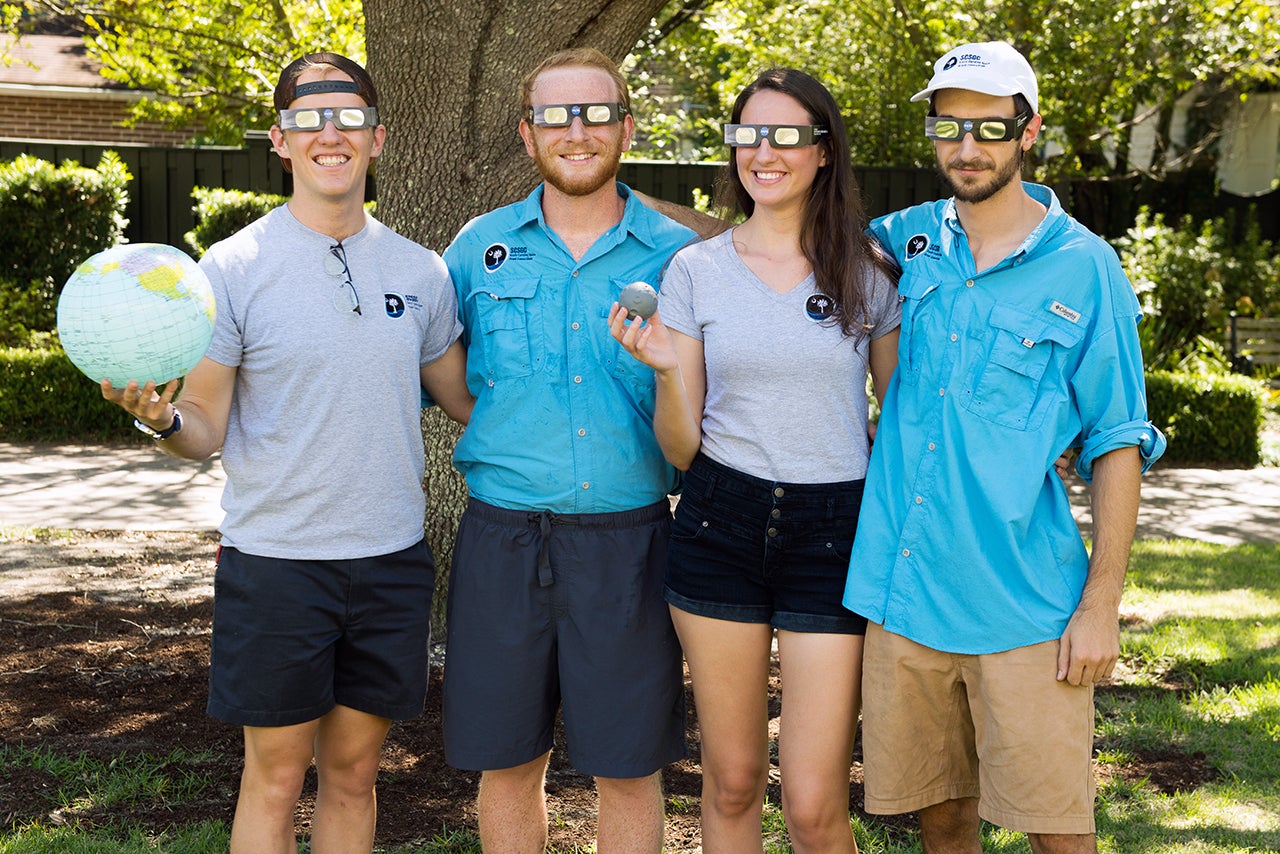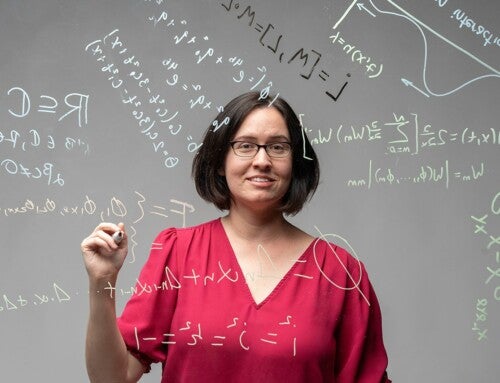Sometimes we learn the most not when we succeed, but when we fail. Sometimes it’s not the end result, but the lessons learned along the way that make some journeys a worthy pursuit.
That was the case for four students who were part of a CofC team that launched a high-altitude balloon on Aug. 21, 2017, as part of NASA’s ambitious Space Grant Ballooning Project, which aimed to broadcast the first-ever live-streaming video of an eclipse coast-to-coast from the stratosphere.
Launching offshore in an unpredictable coastal environment, however, proved challenging for the CofC team.
“You know the classic saying, ‘you lost the battle but you won the war,’ this was an excellent example of that,” says geology major Sam Fink.

CofC’s Space Grant ballooning team practices for eclipse day during a test launch in June. Photo by Amanda Kerr.
The team’s first attempt to launch the balloon failed when a gust of wind swept it away. Then the team lost pressure in the helium tank, which meant there was not enough gas to lift the second balloon and all the technical equipment. Once the balloon was off the ground, with a much lighter load, the radio tracking device stopped transponding, and the team never recovered its 360-degree camera.
“We fought many a good battle leading up to eclipse day, and we won the war, so-to-speak, but in that last moment, when it all came down, some things were out of our control,” Fink says.
Cassandra Runyon, a geology professor and director of the South Carolina Space Grant Consortium, and Cyndi Hall, director of the College’s Lowcountry Hall of Science and Math, say the true value of the project was the hands-on, experiential learning opportunities the students enjoyed during the year they spent preparing for the launch.
“They learned so much in the way of teamwork and communication skills, and just broadening their horizons and their curiosity,” Runyon says. “Instead of coming to us for answers to questions, they took the initiative to find out their own answers and apply them and test them.”
RELATED: Read more stories about CofC’s involvement with the 2017 total solar eclipse.
Geology major Ashley Turner says she learned a lot about communicating scientific information in an engaging and meaningful way in her role doing public outreach.
After tinkering with computer hardware to perfect the software and computer systems attached to the balloon, computer science major Robert Moody has found his career aspirations leaning more toward information technology.

Ashley Turner, Annie Johnson ’17 and Logan Avera ’17 monitor images from the high-altitude balloon during a test launch in June. Photo by Amanda Kerr.
On Eclipse day, exercise science major Carson Keeter, who served as a ground station operator monitoring the location of the balloon, found himself using trigonometry skills from his biomechanics class to track the balloon when the radio tracking system stopped transponding.
And as one of the balloon operators, Fink learned about rocketry and propulsion over the year he prepared for the launch. As a result, he now wants to pursue a graduate degree in engineering with the goal of one day using those skills to build a device to clean-up space debris.
“Each one of these students, I really think that they’ve turned into leaders,” says Hall, noting that the academic and soft skills they learned have set them up for success as they prepare for life after college. “They’re going to go somewhere. Their futures are wide open.”
Despite launch day not going as smoothly as they had hoped, the students, all seniors, came away from the experience believing they are capable of dreaming – and accomplishing – big things.
“I think what I have learned about myself is that I can do more than just what I decide to do in my career,” says Keeter.
Fink adds, “Before I did this project, I was afraid of biting off more than I could chew. After this project, I’m just trying to stuff as much in my mouth as I can and worry about chewing later.”
Feature photo: From left to right, students Carson Keeter, Robert Moody, Ashley Turner and Sam Fink gained a lot of experience through NASA’s solar eclipse ballooning project. Photo by Reese Moore.




